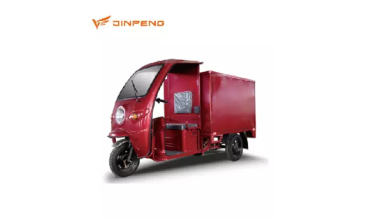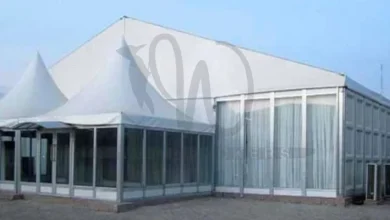Trekking Beyond Everest Base Camp A Sherpa’s Route to Gokyo Lakes

The trek to Gokyo Lakes beyond Everest Base Camp is the best! Though Everest Base Camp is the dream, the trek to Gokyo Lakes is often touted as an even more incredible alternative with stunning views, fewer crowds, and a beautiful landscape. Traveling this route with a Sherpa guide takes the experience to another level, combining expert navigation with cultural insights and a deep bond to the land itself.
The voyage starts with the popular trail to Everest Base Camp Hike, where hikers can stand in the shadow of the world’s tallest peak. After [Everest Base Camp] you will steer away from the traditional landing to make your way to the beautiful [Gokyo Lakes]. This leg of the trek delivers stunning vistas of Everest, Lhotse, Makalu, and Cho Oyu, viewed from perspectives that are much less crowded and much more serene.
Trekkers rely on Sherpas to navigate the treacherous terrain safely and to pace themselves so they acclimatize properly. The deeper you head into the Gokyo region, the higher the altitude climbs, and thus the more useful a Sherpa’s expertise is. They are trained to identify the early symptoms of altitude sickness on time and to advise trekkers on when to rest or alter their plans to keep them healthy through the entire trek.
They offer cultural experiences, sharing stories of the region, its people, and their spiritual connection to ethereal mountains, far and beyond the physical demands. Each trek to Gokyo Lakes is also one of the sacred beauties of the area’s turquoise lakes as well as the scenic Gokyo Ri summit, where the majestic views with surrounding peaks become a high point of the memorable experience of life.
Making the decision to continue your trek to Gokyo Lakes beyond Everest Base Camp with a Sherpa guide is not simply a test of your physical limits—it is an opportunity to gain a profound relationship with the Himalayan region, its people, and its extraordinary beauty.
Guide to Trekking Beyond Everest Base Camp
Trekking beyond Everest Base Camp leads to more incredible and undeveloped regions of the Himalayas. Although Everest Base Camp is an iconic trek where you get to see both Mount Everest and surrounding peaks, many trekkers look for an extension to their adventure to whisk them into the more remote corners of the region. The Gokyo Lakes Trek is one path through this wilderness, and what a beautiful one at that as trekkers are led into the Gokyo Valley where blue lakes lie underneath dominating snow-topped giants.
EBC Trek The journey beyond Everest Base Camp opens up some of the quieter trails, The journey beyond Everest Base Camp opens up some of the quieter trails, fewer crowds , and some of the most extreme landscapes in the world. The valleys, glaciers, and high ridges of trekking offer solitude and connection to nature that is not always available on more popular routes. Among the best experiences in this region is a trek to the Gokyo Lakes, which offers some of the best panoramic views around, lakes of a crystalline blue, and cultural immersion in Sherpa villages. It’s a trek that can be physically demanding but is also deeply rewarding, allowing trekkers to experience the Everest region’s beauty in a more secluded, less commercialized manner.
The experience of trekking beyond Everest Base Camp is for those pursuing adventure, solitude, and the jaw-dropping beauty of the Himalayas — every step brings forth new sights and experiences that remain with you long after you return home.
Sherpas play a crucial role in the Gokyo Lakes Trek.
Sherpas are vital to a successful, safe, and enjoyable Gokyo Lakes Trek. Jasudhar, the native people of the Everest region are the perfect guides for hiking in the Himalayas as they know well the landscape, weather conditions, and mannerisms. They are one of the best movers in the rugged high-altitude terrain and they are a big help in managing tough parts of the way.
A crucial element of Sherpas’ knowledge is assisting trekkers in adjusting to the high altitude. When you climb above 4000m you will also start to feel the effects of thin air and precautions must be taken to avoid altitude sickness. Sherpas have trained to recognize the signs of altitude challenges and know how to adjust the pace and schedule of the trek to allow the trekkers to acclimatize safely.
Sherpas also provide logistical support getting your loads where they need to go so that no one on the trek needs to carry massive backpacks and just focus on enjoying the scenery. Besides the physical support they provide, Sherpas also serve as cultural ambassadors, sharing stories of the local culture, Buddhist traditions, and spirituality associated with the Gokyo Lakes. They know the area like the back of their hands and familiarize themselves with the terrain, so they are crucial to providing a safe and enlightening experience for all trekkers.
Highlights of Gokyo Lakes Trek
Gokyo and Everest Base Camp Trek Itinerary A stunning trek in the Everest region, the Gokyo Lakes Trek showcases gorgeous scenery and serenity. One of the major attractions is the Gokyo Lakes, which are six beautiful turquoise lakes that have been formed by glacial meltwater. These lakes, with their crystal-clear waters, are surrounded by towering mountains, including the likes of Cho Oyu, Lhotse, and Mount Everest. The Tibetans do not remember the long stretches of this sparkle blue lake of a crime scene, while reaching there the snow-mandled tips surface expert in the flavor of a crinkle.
One of the highlights of the trek is Gokyo Ri, which is a summit at 5,357 meters and offers one of the best panoramic views of Mount Everest and surrounding peaks. From this point, trekkers can enjoy a stunning 360-degree view of the Everest range, including Cho Oyu, Makalu, and Lhotse. While the climb to Gokyo Ri can be difficult, it is also the most rewarding part of the trek, as you feel very accomplished and your views are breathtaking.
Throughout the trek, hikers will also pass through Sherpa villages, including Namche Bazaar, Dole , and Machhermo, where visitors can immerse themselves in local culture, tour Buddhist monasteries and experience life in the high Himalayas. The trek winds through dense forests of rhododendrons and junipers, and along the way, there’s the opportunity to spot wildlife including yaks, Himalayan tahr (a relative of the goat,) and a number of bird species. The Gokyo Lakes Trek is a stunning blend of natural beauty and cultural immersion, making it a must-do in the Himalayas.
All You Need to Know About the Gokyo Lakes Trek vs Everest Base Camp
Although both Everest Base Camp Trek and Gokyo Lakes Trek are magnificent adventures on foot, they are different adventures for the trekkers. The Everest Base Camp Trek is the most popular and repeatedly trekked path, the purpose of which is to arrive at the mountaineering Base camp of Mount Everest. On the way, trekkers travel through famous villages such as Namche Bazaar and Tengboche, visit the iconic Everest memorials, and witness breathtaking views of Everest, Lhotse, and Nuptse. Due to the fame of the destination, the trek can also be congested, especially in peak seasons, as several trekkers head to the classic destination.
On the other hand, the EBC Gokyo Lakes Trek is less busy and offers a quieter, more tranquil experience. Instead of just climbing Mount Everest itself, the Gokyo Lakes Trek brings trekkers to stunning lakes carved out by glaciers with bright turquoise water surrounded by towering mountains. Another highlight of the trek is the ascent of Gokyo Ri for breathtaking panoramic vistas of Everest and the surrounding mountains, making it a unique perspective of the region.
Although both hikes come with challenges of high-altitude terrain, the Gokyo Lakes Trek is typically seen as a little more strenuous because it has to navigate backcountry and less-travel trails. It also leads trekkers through diverse landscapes, ranging from verdant valleys to stark, glacial terrain. Conversely, The Everest Base Camp Trek is a more simple and reliable path. In the end, deciding on one of these treks is really down to whether you want a typical Everest Base Camp experience or a more off-the-beaten-path and serene trek to the Gokyo Lakes.
Acclimatization and altitude matters
One of the most crucial components of high-altitude trekking (especially in the Everest area) is acclimatization. Both the Everest Base Camp Trek and the Gokyo Lakes Trek involve trekking to high altitudes in which the oxygen levels are significantly thinner compared to sea level, which can result in altitude sickness if proper precautions are not taken. With the increase in altitude, the risk of altitude sickness increases, so proper acclimatization is key to gradually adjusting the body to low levels of oxygen.
Sherpas are essential for acclimatization, teaching what works and what doesn’t. One of the best-known strategies is the “climb high, sleep low” approach. This entails hiking to higher elevations during the day and then going down to sleep at lower elevations. This approach allows the body to adapt more quickly to the oxygen-poor atmosphere while reducing the chances of developing altitude sickness. Trekking routes generally also integrate rest days for trekkers to acclimatize before the next stage of their journey.
Trekkers also need to recognize symptoms of altitude sickness, such as headaches, nausea, dizziness, and shortness of breath. Sherpas are trained to identify these symptoms early and will do all that’s necessary to protect the trekker’s safety, including slowing the pace or organizing a descent if necessary. Having an experienced Sherpa guide is a huge benefit when it comes to trekking, as they know how to deal with altitude sickness and can provide immediate assistance should any symptoms arise.
Best Route to Access Gokyo Lakes
Gokyo and Everest Base Camp Trek Map The most popular Gokyo Lakes route starts in Lukla (one of the towns in Khumbu Valley) where most of the Everest region treks begin and generally involve a flight. Trekking from Lukla, trekkers share the same route as the Everest Base Camp Trek until Namche Bazaar. But instead of heading toward Everest Base Camp, trekkers will take a left at Namche Bazaar toward Dole, and from there, the trail rises gradually to the Gokyo Lakes.
The trail passes through traditional Sherpa villages, like Phortse and Machhermo, where trekkers can get a slice of life in one of these high-altitude communities. Along the way, you’ll be rewarded with breathtaking views of Cho Oyu, Lhotse, and Makalu and will traverse through a variety of landscapes, from hero forests to alpine meadows and glacial moraines.
After visiting the Gokyo Lakes, the common practice among hikers is to hike up Gokyo Ri, a peak that provides panoramic views of Mount Everest, Cho Oyu, and other surrounding peaks. The climb of Gokyo Ri is one of the most rewarding parts of the trek, both from a sense of achievement standpoint as well as having an entirely different viewpoint of the Everest region.
In general, the Gokyo Lakes route is less crowded than the Everest Base Camp Trek prefix and provides a more peaceful trekking experience whilst still giving visitors a chance to see a number of superior views of these mighty mountains.
With Knowledge of the Terrain from a Sherpa
This Gokyo Lakes trek is a magnificent route that takes trekkers through some of the most rugged and remote landscapes on earth! This complex landscape is best understood by someone who has intimate knowledge of the mountains, which is what a Sherpa does. Sherpas are the masters of their terrain, knowing everything there is to know about the Khumbu region, even down to the exact trails, weather conditions, and potential hazards trekkers may face.
Gokyo and Everest Base Camp Trek Weather The terrain is harder as the trekkers rise to higher altitudes, including steep ascents, stony paths, and thin ridgelines. Sherpas know how to handle these challenging conditions and can help trekkers maneuver safely. They know the way through areas that constantly change, before you, and keep you where you belong. Moreover, Sherpas are high-altitude experts and make certain that trekkers acclimatize adequately to avoid altitude sickness. They can set the pace to suit the group, a balance between enjoying the scenery and managing energy levels.
A Sherpa guide is even more crucial in high-altitude areas, where the oxygen is thin and the landscape intricate. They understand the difficulties the terrain has to offer and can guide trekkers through the challenging parts, in turn making the experience easier and, therefore, more rewarding.
Gokyo Trek Cultural Experiences⠀
From the beauty of the landscape to the richness of the Sherpa culture and traditions that have shaped the region for centuries, the Gokyo Lakes trek has it all. As trekkers head toward the Gokyo Lakes, they trek through Sherpa settlements, and past old monasteries and prayer wheels that are a key part of local spiritual life.
Sherpas have an infinitely intimate relationship with the Himalayas, which in Tibetan Buddhism are considered sacred. Along the way, trekkers will learn about the spirituality of the Sherpa people, their relationship to the mountains, and the importance of places like Gokyo Ri; a high-altitude peak with sweeping views of the Everest region. The trail passes by ancient monasteries and one can witness rituals performed, prayer flags flying in the wind, and the amazing tranquillity these religious places offer.
Beyond exploring these cultural areas, trekkers also have the opportunity to engage with the local Sherpa communities. You can stay in teahouses run by locals on the Gokyo Lakes trek, where enjoy meals made with local herbs by the Sherpa people, like dal bhat (lentil soup and rice) and more. These exchanges offer a glimpse into the Sherpa way of life, how embedded they are into their environment and the traditions that have endured for centuries.
Since you hike with a Sherpa guide, you’ll need to tackle the physical challenges of the trail while learning about a culture that thrives in the shadow of the Himalayas.
Safety Precautions and Emergency Assistance
While trekking to Gokyo Lakes, rewarding, entails a certain degree of risk due to the high-altitude environment, challenging terrain, and volatile weather. This is why safety precautions are paramount, and a Sherpa guide at your side provides an invaluable extra layer of protection. At this altitude, most tourists are likely to develop altitude sickness, and their sherpas are trained to recognize and handle it.
To have a safe Manaslu Circuit Trek, Acclimatization is the most important aspect. Most importantly, Sherpas know how to pace the trek to ensure trekkers have enough time to acclimatize to the increasing altitude. They track the health of the group and keep an eye out for signs of altitude sickness, like headaches, nausea, or dizziness, and can take immediate steps to avert further complications.
Sherpas are familiar with performing first aid and treating injuries or altitude-related illnesses. They are also in communication with local rescue teams and know where to go for medical assistance in case they need it. With a Sherpa accompanying them, trekkers are never alone, even in the most remote of places. Sherpas come trained with up-to-date knowledge of emergency evacuation procedures, which may also help if an evacuation is necessary, and they know the safest paths to bring trekkers to lower elevations quickly.
Trekkers who utilize Sherpa guidance can rest assured that their safety is being prioritized, enabling them to appreciate the stunning vistas without stress about the inherent dangers involved with trekking.
Trekking to Gokyo Lakes Essential Gear
The trek to Gokyo Lakes is an exhilarating adventure that requires proper packing and preparation. They can, through their knowledge of the region, offer advice on what gear is truly necessary for a trek of this kind. Good shoes are important; hikers will be walking on rocky and uneven paths. The most important thing is a sturdy, waterproof hiking boot with good ankle support for tackling rough terrain.
Gokyo trek is also a trail that requires layered clothing because the temperature varies during the day. High-altitude treks necessitate moisture-wicking base layers, insulating mid-layers, and a sturdy, waterproof outer shell. The Sherpas counter with a recommendation to bring only lightweight, high-performance gear, providing warmth without extra poundage. On the colder mornings and evenings, a down jacket, warm gloves, and a beanie are advisable.
As walking days are long on trek to Gokyo Lakes, you must stay hydrated. During the trek, it is important to have a good-quality water bottle or hydration system to ensure you are always hydrating. Hiking poles can also help ensure balance during steep climbs or on irregular geographical surfaces. You will want a comfortable and durable daypack to hold personal items such as water, snacks, and a camera.
Sherpas also says to pack a first-aid kit, a headlamp, sunblock, sunglasses, and a power bank for charging devices. The right gear is important for a safe and enjoyable experience, and trekking with a Sherpa makes sure you’re equipped and have everything you need to conquer this incredible adventure.
When to Trek Beyond Everest Base Camp
The ideal seasons to trek the area beyond Everest Base Camp to Gokyo Lakes are in spring (March to May) and autumn (September to November) months. The weather in these seasons is most compatible for a pleasant and safe hike. Spring is the favorite, with moderate temperatures, clear skies, and stunning vistas of the surrounding snow-capped mountains, including the famous Everest, Lhotse, and Makalu. The trail tends to be less crowded during this period, granting trekkers a chance to experience a more tranquil and intimate glimpse of the Himalayas.
Autumn is also the best trekking season for Gokyo Lakes. Post-monsoon, the trails are dry, and the weather is crisp and clear — the visibility is pristine for panoramic views of snow-covered mountain peaks. Spring sees fewer tourists than autumn but also much better weather, providing optimal trekking conditions if the chance of snow or torrential rain is low. Its fall months fill the landscape with rich colors, giving you a great visual trek.
Though winter treks are possible: Our trails can be icy and hard to walk during this season due to the extreme cold and consistent snowfall. Likewise, the monsoon season (June to August) is a no-no as trails are muddy, and the possibility of landslides is higher. However, the best trekking conditions are in the spring and autumn, which allow trekkers to enjoy the full adventure without adverse weather.
SOUL VIBRATIONS: A Life-Altering Experience with Sherpa
The Gokyo Lakes trek is truly a life-altering experience that combines unsurpassed stunning scenery and intriguing local culture with a unique opportunity to explore Sherpa culture and traditions. A Sherpa guide is a must when trekking, not just for the extra safety and navigation on one of the world’s most punishing and remote routes, but as a source of local knowledge and ancestral lore.
From expertly navigating the rugged terrain to discussing the region’s spiritual significance, Sherpas turned the trek into more than a physical endeavor. They also assist with acclimatization to the altitude, which is critical to progressing safely on the trek. The cultural immersion along the trail, including visiting Buddhist monasteries and engaging with local communities, allows for a deeper appreciation of the region’s unique history and traditions.
The ideal seasons for trekking are spring and autumn, where the conditions are the least challenging. It is important to have the right gear, and with Sherpa’s advice, trekkers can make sure they have everything they need ahead of the trek.
It is an incredible experience to trek to Gokyo Lakes with a Sherpa guide with a sense of adventure, connection, and safety. If you are looking to test your limits physically or experience the beauty and culture of the Himalayas up close, this trek will give you memories to last a lifetime.





